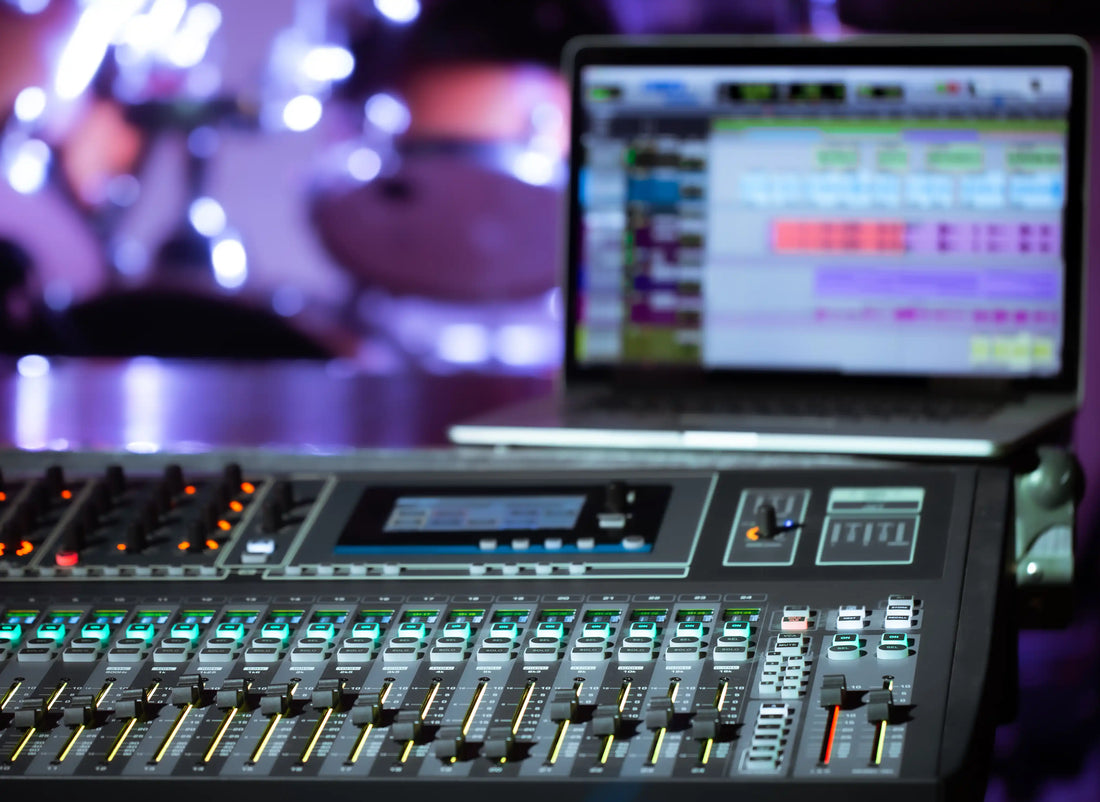What Should You Know Before Using a PA System on Stage?
Whether you're performing at a café, wedding, church, or full-on concert hall, knowing how to properly use a PA system on stage is essential for any live musician, vocalist, or band. Public Address systems amplify your sound so that your audience can hear you clearly and at the right volume. But without proper knowledge, even the best gear can cause feedback, muddiness, or technical problems mid-show.
If you're just stepping into the world of live sound, or upgrading your current rig for stage use, there's more to it than just plugging in microphones and hoping for the best. From setup and signal flow to speaker placement and EQ, the details matter. For performers in Malaysia, Guitarlicious offers trusted PA systems, mics, cables, and expert advice to get you stage-ready without the stress.
What Does a PA System Include, and How Does It Work?
A PA system is made up of various components that work together to amplify your sound. At the basic level, this includes microphones, a mixer, amplifiers (either built-in or separate), and loudspeakers. The signal flows from the microphone or instrument into the mixer, where volume, EQ, and effects can be adjusted. It’s then routed to the amplifier and finally projected out through speakers.
Modern systems often use powered speakers, which means the amplifier is built into the speaker itself, reducing the number of cables and gear needed. A portable system might include a mixer with built-in effects and Bluetooth connectivity, making it easier for solo performers and duos to manage their sound on stage.
Understanding how these components connect will help you troubleshoot if problems arise mid-performance. For beginners, combo PA units like the Yamaha StagePas or Behringer Europort series are popular for their ease of use and portability. You can compare options by brand on the Shop by Brands page.
How Should You Set Up a PA System for Live Performance?
Setting up your PA system correctly ensures the best possible sound and helps avoid common problems like feedback and muddy tone. Start by placing your speakers ahead of your microphones, pointing towards the audience, not directly at the performers. This minimises the risk of audio looping back into the mics, causing screeching feedback.
Your mixer should be placed somewhere accessible, usually on stage or at the side, so that it can be adjusted during performance. Plug your microphones or instruments into the mixer using XLR or ¼-inch cables, and ensure that phantom power is turned on for condenser microphones if needed.
Run a soundcheck before your audience arrives. Test all channels individually, adjust levels, and apply EQ to enhance clarity. If you have effects like reverb or delay built into your mixer, use them sparingly to add polish without overwhelming your sound.
Don’t forget your monitoring setup. Stage monitors or in-ear monitors help you hear yourself, ensuring your vocals and playing remain in sync. Visit the Guitarlicious accessories section for essential cables, monitors, and mic stands tailored for stage use.
What Are the Common Mistakes When Using a PA System?
Many beginners make avoidable errors when using a PA system on stage. The most common issue is poor speaker placement, which can lead to feedback or uneven sound distribution. Always position speakers facing the audience and away from the stage microphones. If possible, elevate your speakers using stands to ensure the sound reaches the back of the venue.
Another mistake is neglecting gain structure. Start by setting input gain on your mixer so that the signal is strong but not peaking. Then adjust your faders accordingly. If you rely too heavily on EQ to fix tonal issues, you may end up with unnatural sound or excessive frequencies. Instead, fix the source, change mic position, use proper vocal technique, and use quality gear.
Also, avoid overloading the system with too many effects or incorrect cable types. Using instrument cables where a balanced mic cable is needed can introduce hum and reduce clarity. During a gig, these mistakes are not just distracting, they’re disastrous.
To avoid these issues, check out the Guitarlicious blog for practical advice on gear setup, live mixing, and best practices for musicians.
How Can You Choose the Right PA System for Your Stage Needs?
The best PA system for you depends on the type of performances you do and the size of the venue. A solo performer playing at cafés or weddings may only need a compact, all-in-one portable PA with two inputs. A full band, on the other hand, will require multiple input channels, separate monitors, and possibly a subwoofer for handling low-end instruments like bass or kick drum.
Consider portability as well. If you travel often, a lightweight system with built-in handles and wheels will save you hassle. Battery-powered PAs are excellent for busking or remote outdoor gigs. Power output matters, too: for small rooms, 100–300 watts per speaker is often enough; for medium venues, 500–1000 watts is preferred.
Connectivity is another factor. Do you need Bluetooth streaming for backing tracks? USB for recording? AUX input for tracks from a phone? Modern PA systems often combine analogue and digital functions, giving you flexibility without extra gear.
To manage your gear list, orders, and favourites, use the Guitarlicious login portal and keep your equipment checklist streamlined before each performance.
FAQs
1. Can I use a PA system for both vocals and instruments?
Yes. Most PA systems include separate input channels for microphones and instruments, often with EQ and effects on each channel.
2. What’s the difference between passive and active (powered) PA speakers?
Passive speakers require an external amplifier, while active (powered) speakers have built-in amplification, making setup easier and faster for smaller gigs.
3. Do I need a mixer if I have powered speakers?
You only need a mixer if you're using multiple sound sources or want more control over EQ and effects. Some powered speakers have simple two-channel mixers built in.
4. How do I avoid feedback on stage?
Position speakers in front of microphones, avoid cranking gain unnecessarily, and use directional microphones to reduce pickup of ambient noise.
5. Where can I buy a reliable PA system in Malaysia?
You can explore stage-ready PA systems and expert advice at Guitarlicious, with products suitable for solo performers, bands, and worship teams alike.
Final Note: Mastering Your Sound with the Right PA Setup
Mastering the use of a PA system on stage is a fundamental step in becoming a confident live performer. It’s not just about loudness, it’s about clarity, consistency, and control. From understanding the core components of your system to learning how to place speakers, run soundchecks, and avoid common pitfalls, these skills will elevate your gigs from chaotic to professional. With the right setup, you’ll be able to deliver your music exactly as you intend, every time you step on stage. For dependable gear, expert advice, and quality components, visit Guitarlicious and build a PA system that works for you. You’ll also find guides on speaker setup and mixing on the blog, and can explore speaker packages, mics, and stands via the accessories section.

